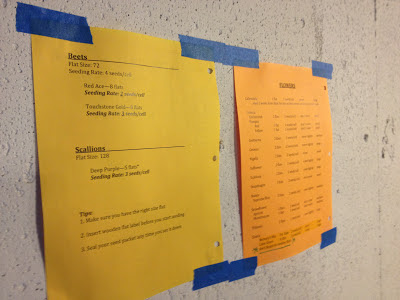When I was a
youngster, my Dad had a set of electric hair clippers. At a designated hour every month, my
brothers and I would line up by a tall stool in the basement, and one by one, Dad
would zip off our hair, clippers buzzing furiously.
As a barber,
Dad had a sure-handed and confident technique, and we’d emerge from the
basement with perfectly trimmed buzz cuts.
Our closely cropped dos would be the envy of any young military
recruit.
I am far
less confident of the outcome as I approach Apple Trace at Restoration Farm on
one of the last days of winter, preparing to prune the line of young apple
trees for the very first time. The
eight heritage apple trees were planted in memory of my father James M. Barritt,
Jr. in the spring of 2012.
Restoration
Farm’s resident fruit tree expert, Glenn Aldridge tells me the window for late
winter pruning is once a year, and it is just about closed. The tree is dormant, and energy is stored in
the root, so the pruning promotes new growth in the spring. Even at an early age, pruning is important to
influence the future growth and shape of a tree. The goal of pruning is to expose the strongest
branches of the tree to as much sun and air as possible.
I am
skeptical. The trees look so
fragile. They are barely twigs, so how
will they withstand a pruning?
I’m not
quite ready to make the first cut, so I stroll down a secluded path adjacent to
the historic village to visit the old Hewlett Apple Orchard and see how the
trees there have progressed. Exactly a
year ago, we began pruning those long neglected trees, and Glenn has been
working the orchard throughout the winter.
Along the way, I am trailed by a small flock of Billy goats who follow
me into the orchard.
At the Hewlett
Apple Orchard, the trees appear to be thriving. None are the worse for the rigorous pruning
we gave them last year. They look
strong, healthy, well-shaped and ready for spring.
So, perhaps
the fledgling trees of Apple Trace would hold up to a little pruning. After all, I survived the once-monthly trauma
of a buzz cut. I return to Apple Trace
with renewed determination.
In
discussing “intuitive pruning,” orchardist Michael Phillips says, “Approach
each tree with an introductory intake of the breath. This meditative pause is when you take in the
tree’s framework and overall shape. How
does it fit within the row? Are some
branches too low? Is the leader beyond
reach?”
I take a
deep breath. I walk around each little
tree and examine it carefully. Where are
the odd, outlier branches? Where do the
branches grow together in a pleasing conical shape? At last, I am ready to take the clippers in
hand. I’ve convinced myself that pruning
will be beneficial, and a path to renewal for these beloved trees.
As I examine
each tree, and clip one branch at a time, I start to see the results. The trees look cleaner, streamlined and
shapelier. Each is a different variety, and each has its own shape and character.
As I clip
each branch, I collect the twigs. I’ll
put them in a vase on the Easter dinner table as a reminder of Dad and his
apple trees taking root at Restoration Farm.
Someday, should the pruning pay off, perhaps I’ll make an apple tart with the fruit from Apple
Trace.
As I bundle
up the cuttings and prepare to leave, I notice a family of robins who have
alighted on Chapel Field – a sure sign of the promise of the season ahead.
Happy
Easter! Happy Spring!















































